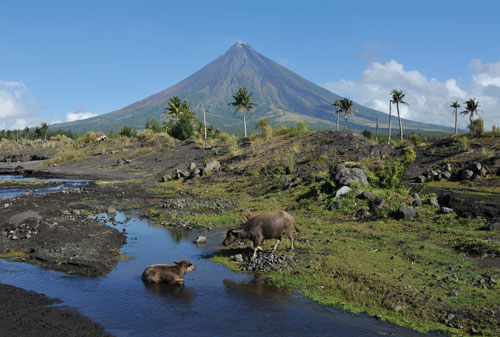The Bicol Region is poised to become an ecotourism hub with its abundance of natural attractions and outdoor activites, but care must be taken to ensure its sustainable development

Not yet a prime tourist destination, the undeveloped Bicol Region in south-eastern Luzon is still considered to be malleable and relatively easy to develop an ecotourism blueprint, compared with mature destinations with similar aspirations.
While there’s no denying that Bicol has what it takes to become an ecotourism hub, will it be able to sustain it in the long term? Bicol’s local governments appear keen to play the cards right in the province’s ecotourism development.
Joey Salceda, governor of Albay province – the gateway to Bicol – has been emphasising ecotourism by reducing the province’s carbon footprint and increasing its forest cover by 88 per cent to 45,000ha. He said: “Tourism forces us to become green as it’s what tourists come here for.”
Salceda said the present Legazpi airport will be converted into a tourism hub that is similar to Sentosa in Singapore. However, development will be limited to three or four storeys so as not to obstruct the view of the iconic Mayon Volcano.
He added that Albay tourism is entering the investment-led phase of growth, and is actively courting investors to place their money in resorts and ease the room shortage.
Department of Tourism Bicol has outlined long-term ecotourism goals in anticipation of higher visitor arrivals to the region with developments such as the opening of the new Bicol International Airport in Daraga, Albay in 2018, according to director Maria Ravanilla.
There are also concrete plans to develop more ecotourism products based on the region’s vast wealth of natural sites and attractions, she added.
Aside from sprucing up Albay, the province has joined hands with the neighbouring provinces of Masbate and Sorsogon to form the AlMaSor tourism alliance. A similar alliance with three other provinces – Camarines Norte, Camarines Sur and Catanduanes – is already in place, Ravanilla said.
Speaking during the PATA New Frontiers Forum held in Albay in November, PATA CEO Mario Hardy lauded Albay’s ecotourism goals: “There are not many destinations anymore that you see are green…an indication that you have something unique here.”
Donsol, in the province of Sorsogon, is home to a sustainable community-based whaleshark encounter programme, which has been so successful in elevating local livelihoods that the previously fourth class municipality is now third class and on its way to becoming first class.
AA Yaptinchay, a marine wildlife expert and also the general manager of Kirschner Travel Manila, is widely credited as the person who developed Donsol’s community-based whaleshark encounter. He emphasised that marine wildlife should be protected, not exploited; tourists should also be educated, and not just entertained.
“We see lots of misguided and misused ecotourism. (Most people) think that anything with beach or sea is ecotourism, but ecotourism should have an educational aspect to it. It’s about helping the community and enhancing the natural sites,” Yaptinchay said.
One of Albay’s main attractions is the ATV rides on the slopes of Mayon Volcano. While this may seem a harmless activity not uncommon in other countries too, several delegates at the PATA New Frontiers Forum remarked that it is not ecotourism and that the social and environmental impacts of the ATVs should be considered.
JP Cabalza, managing director of Cencorp Travel and Tours, said that “protection (of tourist attractions) should be given priority to assure a balanced growth and development of the Bicol Region”.
Apart from Mayon Volcano in Albay and whalesharks in Donsol, Cabalza urged protection of other important ecotourism sites in Sorsogon like Caramoan National Park, Basot and Quinalaang Islands, Tanglar Point, Libmanan Caves, Mount Isarog Natural Park, Malabungot Protected Area, Lagonoy Natural Park in Camarines Sur, and Calaguas Island in Camarines Norte.
This article was first published in TTG Asia, January 8, 2016 issue, on page 11. To read more, please view our digital edition or click here to subscribe.




















